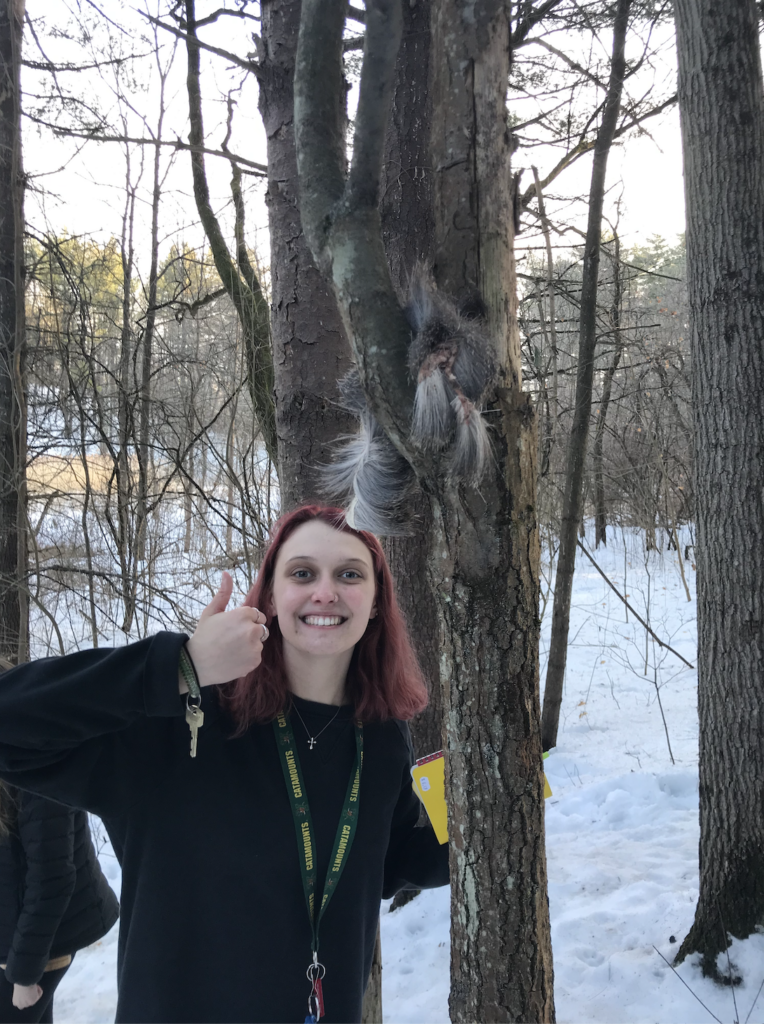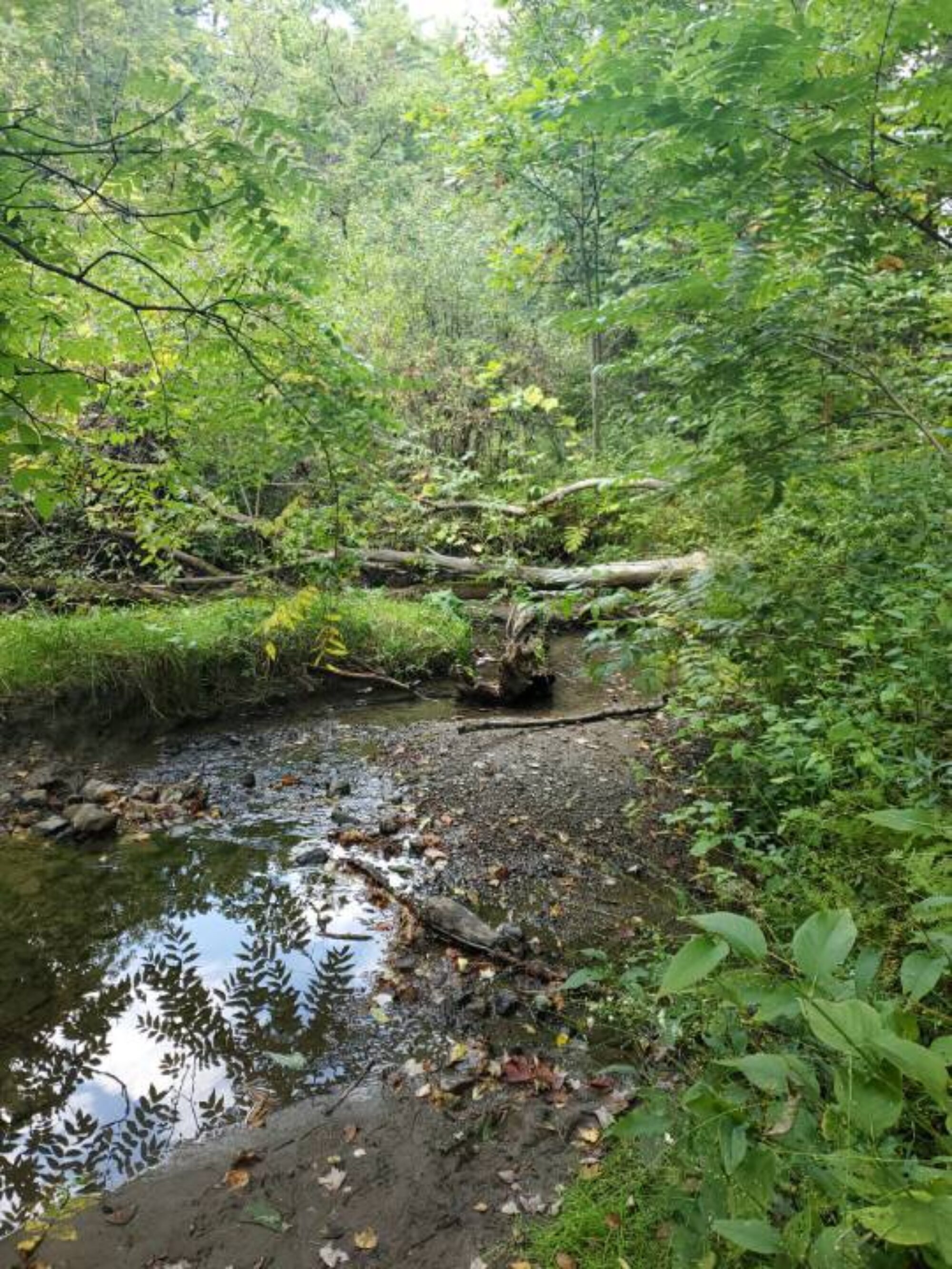Wildlife Activity
While visiting my phenology site on this day, there were very few signs of recent wildlife. While I was able to find signs of wildlife, they didn’t look all that recent. That being said, my friends and I were able to find a dent in the snow that could’ve been a resting deer (or a domestic dog). While we were out there, we also noticed a flock of birds, which we believe to be crows. Additionally, on our way in we noticed bark missing from a tree, and, as expected, we found more dog prints left by human companions. Finally, my friend, Julietta, freaked out on our way to the site because she thought she found a dead squirrel in a tree. Turns out, it was just a fur someone had placed there.

Figure 1 
Figure 2 
Figure 3

Figure 4 
Figure 5
Specific Animal: White-tailed Deer
The animal I chose to focus on that could be in my place is a white-tailed deer. I chose this animal because, though they may be deeper in Centennial, of the missing bark and dent in the snow pictured above. The white-tailed deer (Odocoileus virginianus), prefers forest “edges” and are mostly found in habitats that “feature a blend of large woodlots and agricultural openings,” (White-tailed Deer). Deer are strictly vegetarian, and their diets include small plants, grasses, fruits, and even bark in winter months (like this). Pictured above (Figure 2) may show evidence of a hungry deer. On that note, deer have a number of predators. These include wolves, mountain lions, bears, and (more specific to Vermont), coyotes and humans (Web). Deer have many interactions with other species within its ecosystem. One example is their interaction with trees and shrubs. As mentioned, these are great targets in the winter for hungry deer, and these plants can become damaged in the process. Another interaction deer have in the environment is with humans. Though hopefully not in Centennial, white-tailed deer are commonly hunted for meat and for sport in Vermont. Their heads are often even mounted on walls of cabins as decoration. Besides hunting, deer can be pests to human’s gardens and crops. Additionally, and historically, deer hides were also used to make buckskin leather (Web).
Phenological Changes
Similarly to the lack of wildlife, there hasn’t been much change since the last visit. However, my friends and I were very lucky to go on such a beautiful warm day, and it was about 50 degrees. We also noticed that the water level was slightly lower, as some ice was above the water, not touching it, but still connected to the bank. That being said, the water level was still high and, relatively, rapidly flowing. Additionally, there was a lot more snow since the month before. However, I couldn’t confirm what could’ve been the biggest phenological change, the addition of snow fleas. These little insects are a sign of spring, come out when the weather is warm, and speckle the snow to look like vanilla bean ice cream. I tried to see if they were jumping around, a telltale sign, but didn’t see any movement. This made me wonder if I was just confusing them for dirt. It is still February.

Figure 6 
Figure 7

Figure 8 
Figure 9
Field Notes:

Citations:
Levine, L. (2014). Mammal Tracks and Scat Life-Size Pocket Guide. East Dummerston, VT: Heartwood Press.
Web, A. D. (n.d.). Critter Catalog. Retrieved February 26, 2020, from http://www.biokids.umich.edu/critters/Odocoileus_virginianus/
White-Tailed Deer. (n.d.). Retrieved February 25, 2020, from https://vtfishandwildlife.com/learn-more/vermont-critters/mammals/white-tailed-deer
